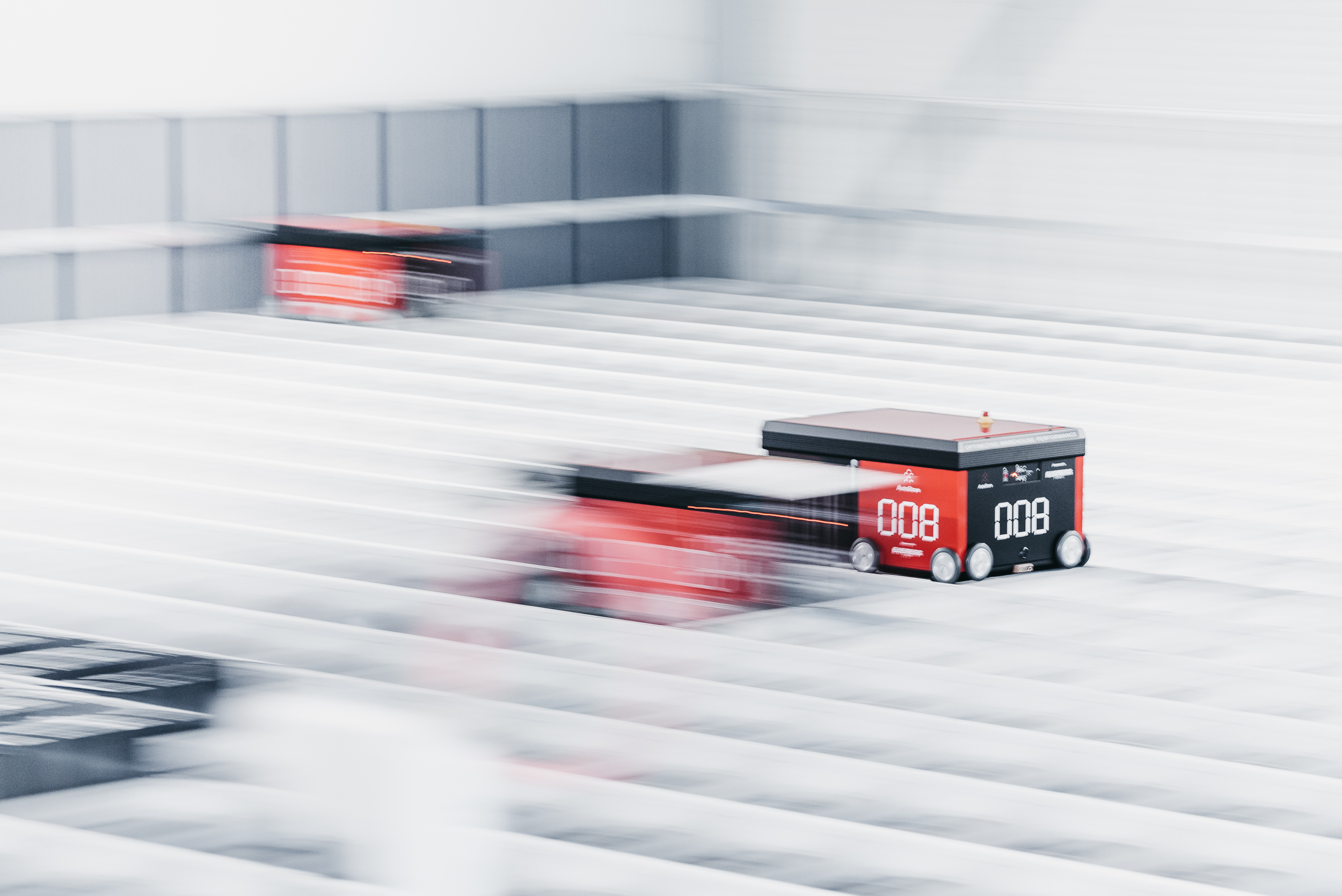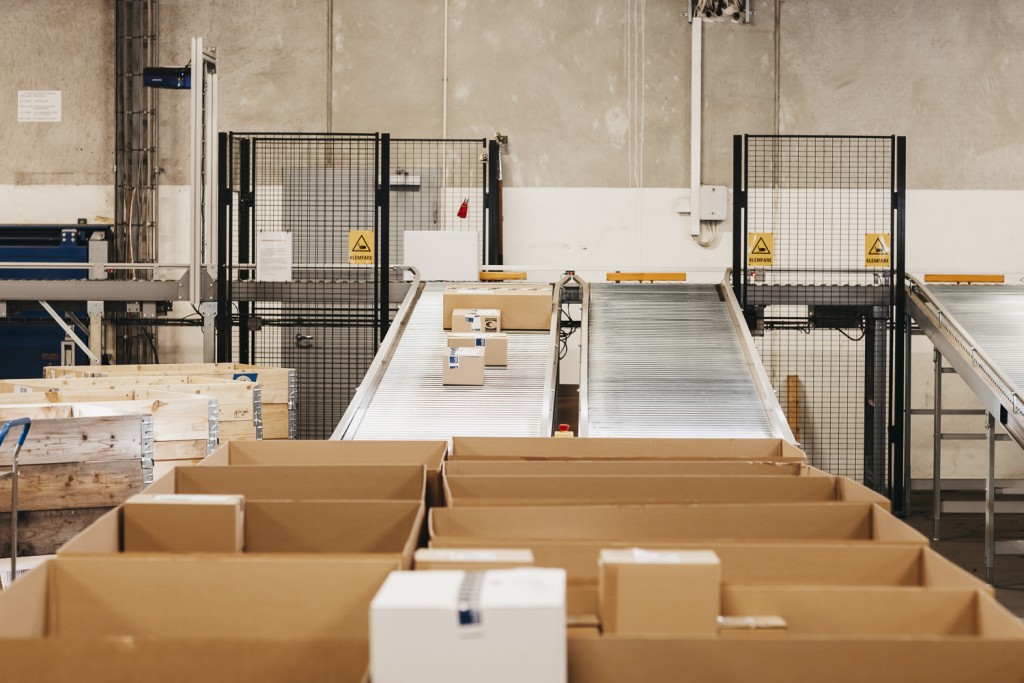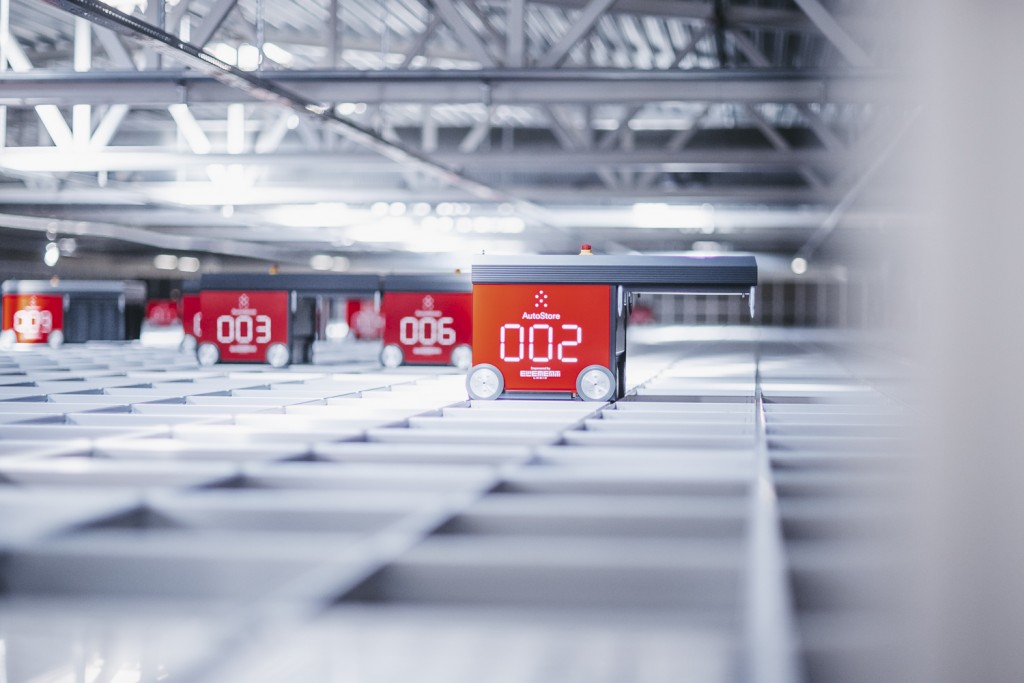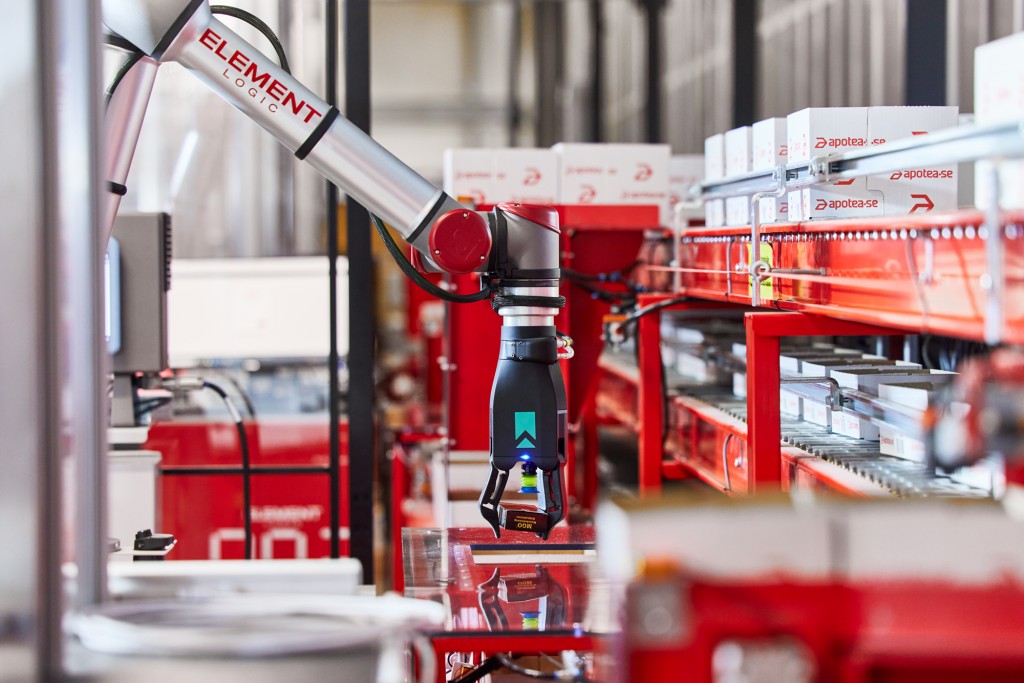What is warehouse automation? Your guide to warehouse automation
Warehouse automation is becoming increasingly popular, with more and more warehouses choosing to invest in it. Here is everything you need to know about warehouse automation.

What is warehouse automation? In short, it involves streamlining operations to boost efficiency and productivity through automated warehouse systems and solutions that replace manual and repetitive tasks. Automating warehouse processes makes it possible to increase storage density, allowing for more efficient use of space.
Warehouse automation also eliminates time-consuming and physically straining work tasks for warehouse workers and frees up time for tasks like quality control and technology management.
The mix of humans and automated warehouse solutions improve overall efficiency, picking accuracy, and reliability while creating a better and safer work environment.
Warehouse processes that can be automated
Warehouse automation technology traditionally consists of robotic piece picking and storage solutions, material flow handling, and various control systems.
We’re also seeing new warehouse automation software provide new features like predictive analytics and real-time inventory control.
Processes you can automate in a warehouse include:
- Inbound: one of the most critical processes in a warehouse. With automated warehouse storage, it can be faster with higher accuracy and a significant reduction in the required space.
- Material flow handling: solutions like conveyor belts move items and inventory from one warehouse zone to another.
- Order picking: the most time-consuming task in a warehouse. This process can be automated with warehouse automation solutions, increasing speed and accuracy.
- Returns: these can be automated with automated sorting systems.
- Sorting: this is made more accurate with automated warehouse solutions.
- Packaging: this is made safer with automated packaging and cartonisation systems.
- Waste: this can be handled automatically and accurately with a warehouse automation solution.
View how the online pharmacy Apotea has automated various warehouse processes:
Learn more about the warehouse automation solutions at Apotea.

Warehouse automation benefits
Automated warehouses increase efficiency and accuracy, resulting in higher customer satisfaction and growth. With the right solution, warehouse automation ROI can be accelerated.
Warehouse automation provides a wide range of additional benefits:
- Space savings: Warehouse automation solutions can secure four times more storage capacity in a given area. Thus, you can move to a smaller warehouse or grow where you are.
- Reduced cost per transaction: With increased productivity, the cost of each transaction is reduced.
- Shorter delivery time: Increased efficiency also shortens the delivery time to your customers.
- Reduced training time: Most warehouse automation solutions need little training to learn.
- Fewer picking errors: Automation minimises human errors in a warehouse.
- Improved inventory control: Real-time inventory management gives greater control and reduces costs from inventory control.
- Ergonomic workplace: Workers no longer need to walk long distances and do heavy lifting daily, making them healthier and more energised.
- Less theft and spoilage: With your inventory safely secured in an automated warehouse solution, you reduce the chances of theft and other spoilage.
- Money saved on trucks: Automated warehouse solutions bring the goods to you – saving you money on trucks and other equipment like forklifts.
- Modular design: Some automated warehouse solutions, like AutoStore, are modular, allowing you to scale up and down according to your needs.
Want to learn more about the financial benefits of warehouse automation?
Download our whitepaper on how to achieve ROI on warehouse automation.
Warehouse automation challenges
An automated warehouse is not always the best choice. If your product range varies monthly, it might not be worth the investment.
This is also true if you are a small business with little to no growth ambitions. Small is defined as two or fewer employees or less than 1000 products.
Types of warehouse automation systems
Warehouse robotics uses technology and software to automate warehouse processes like transporting items and performing various tasks.
Warehouse automation has become an essential competitive factor and is necessary for most industries to stay competitive and achieve efficient warehouse operations. When deciding to invest, you have several types of warehouse automation to choose between.
Types of warehouse automation and robots
- Goods-to-person (GTP). A system that brings goods to a warehouse worker and gives instructions on how many items to pick.
- Automated storage and retrieval systems (AS/RS). AS/RS is designed to store and retrieve products and inventory on demand using goods-to-person-technology. You can often pick and mix technology to create the solution that suits you. There are several different types of AS/RS. An AS/RS can, for example, include autonomous mobile robots, carousels, mini-loads, stockers, and shuttles. The system usually integrates with warehouse control systems (WCS), like eManager, to control operations. AS/RS save you space and improve productivity.
- Automatic Guided Vehicles (AGVs). A mechanised automation system using magnetic strips, wires, floor markers, or sensors to navigate a set warehouse path. Limited to simple but large warehouses.
- Autonomous Mobile Robots (AMRs). With onboard sensors, AMRs are more intelligent than AGVs and can safely navigate warehouse environments alongside human workers.
- Drones. Advanced technology allows drones to locate and count inventory. The drones can reach all warehouse corners and alert you if items are misplaced or need restocking.
- Automated Sortation Systems. Sort items with technology like sensors, barcode scanners, and RFID on a conveyor system to the correct warehouse location.
- Automated Dimensioning Systems. Identify the dimensions of a pallet or parcel with infrared technology.
- Pick-to-light systems. By using scan codes, pick-to-light systems guide warehouse workers with LED displays to the correct storage location and explain how many items should be picked.
- Conveyor systems. Get fast and efficient material flow handling for transporting goods from one area to another with automated conveyor systems.
- Box erector. You can automatically form, fold and seal boxes with an automated box erector to save time on construction during the packaging process.

Element Logic is a global distributor of industry-leading AutoStore. We develop technology that optimises the AS/RS.
Read more about our solutions and services.
When to automate your warehouse
The best time to automate your warehouse is before you need to. It only takes one wrong or late delivery for you to lose current or potential customers. Warehouse automation is an investment in your future and increases the quality of your logistics.
However, it is also important to remember that it’s never too late to automate your warehouse.
Indications that it is time to automate your warehouse include:
- You experience a high turnover rate in your staff or even difficulties hiring warehouse workers altogether. Warehouse automation makes a better work environment and provides predictability.
- You get many customer complaints about wrong items being delivered or delayed orders.
- You have high return rates.
- You need more warehouse space.
Warehouse automation cost
Automation is a substantial investment for most companies. Therefore, getting a proper understanding of all the savings that an automated warehouse represents is imperative.
The initial investment in warehouse automation depends on size, requirements and processes. Modular systems like AutoStore are an advantage as you can start small and grow the solution and the complexity as your requirements change.
You normally start saving money from an automated warehouse solution from day one. The full return on investment (ROI) is usually within a few years, depending on your size and growth.
Contact us to find out the cost and time to ROI for your warehouse.
Is a fully automated warehouse the future?
It is impossible to predict the future. However, it is a safe bet that customers will continue to raise their standards as to what they expect when placing an online order. A human workforce will remain necessary as warehouses become more and more automated to accommodate increasing customer demands.
As the technology matures, you will be able to manage more warehouse processes with software systems utilising big data and artificial intelligence (AI) to optimise operations.
By 2030, warehouses worldwide will have automated many operations as AI takes over repetitive tasks. Experts predict up to 50 – 60 percent growth in warehouse automation over the next ten years. Today it is estimated that about five percent of warehouses are automated.

Robots will not replace humans in warehouses
Some warehouse workers are worried about how warehouse automation will affect their jobs. Still, research implies that it will only improve the working conditions in a warehouse.
With warehouse automation, warehouse workers can spend their workday overseeing warehouse operations and managing automation technology.
Warehouse automation will:
- Reduce work-related injuries
- Eliminate repetitive tasks for warehouse workers
- Be less physically draining, which results in a better life/work balance
- Teach warehouse workers new skills related to technology
- Increase overall safety
- Minimise mistakes due to human errors
- Increase productivity
Warehouse jobs will likely change in the coming years, but they will still exist – just in a more motivating and interesting form.
We have 40 years of experience automating warehouses
Contact us to learn how warehouse automation can optimise your operations!



